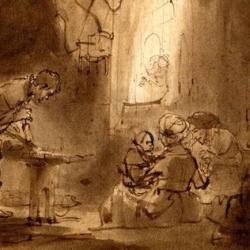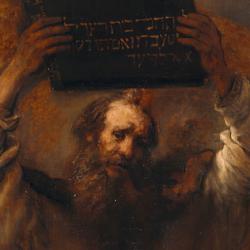Genesis is full of genealogies: A genealogy for Cain (ch. 4), for Seth (ch. 5), a table of the sons of Noah (ch 10), of Shem and Terah (ch. 11), of Ishmael (ch. 25), and of Esau (ch. 36). Besides those seven (!) genealogies, there are other lists of names of the sons of Jacob.
Exodus has little genealogical information. The book begins with a list of the tribes of Israel, and there is a genealogy for Moses and Aaron in Exodus 6. The genealogies of the first two books of the Bible climax with the genealogy of the tribe of Levi, the genealogy of priests. From creation to exodus, the history of humanity aims at the formation of priests, who constitute the eighth genealogy of Scripture.
In the Mosaic phase of Israel’s history, priests are eschatological human beings; priests are men of the eighth day, circumcised on the eighth day and then ordained in an eight-day ceremony.
Numbers has a similar thrust. The first census in Numbers 1 lists only tribal names and the numbers of fighting men in each tribe. The list ends with Naphtali (Numbers 1:42-43), but then a note is added explaining that the tribe of Levi was not included in the census, since the Levites were dedicated to maintaining the tabernacle instead of to conquest (1:47-54). In the second census in Numbers 26, the sub-tribes and families of each tribe are named, but this time the Levites are included, again at the end of the list (26:57-62).
1 Chronicles organizes things differently, though it also gives prominence to the Levites. In 1 Chronicles 1-6 the Levites are not the end of the genealogy, but the chiastic middle of a genealogical arrangement that begins with Judah and ends with Benjamin. As far as 1 Chronicles is concerned, kingship is the alpha and omega of Israel’s history, and the Levites are the hinge of the process. In the Davidic phase, humanity is formed for royalty.














